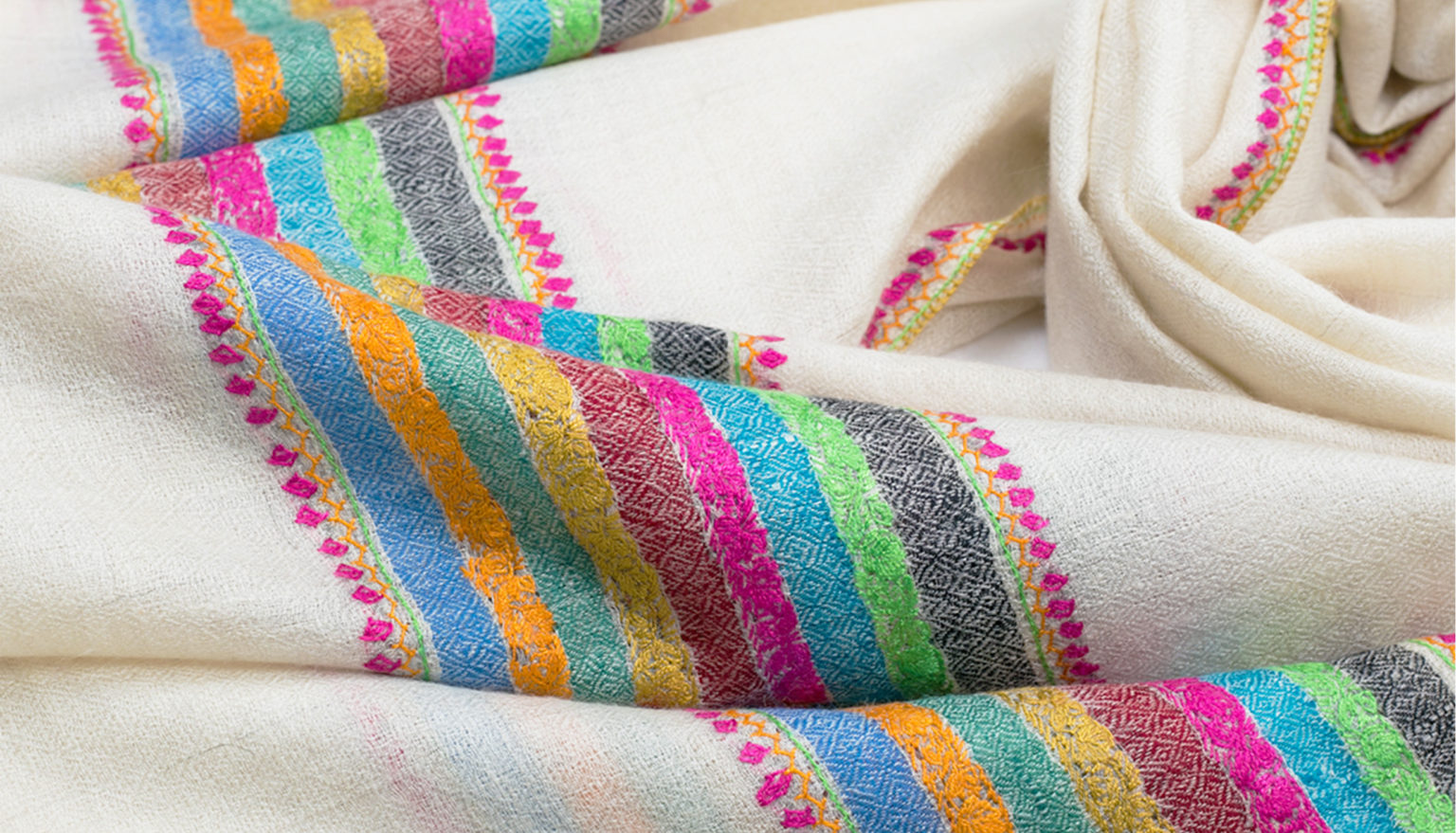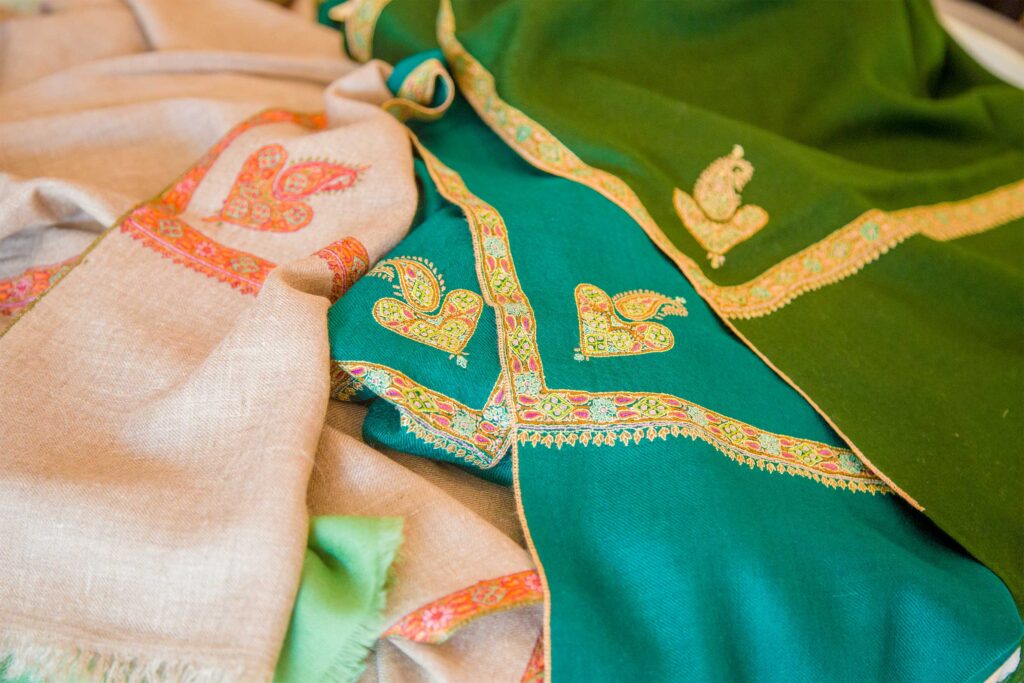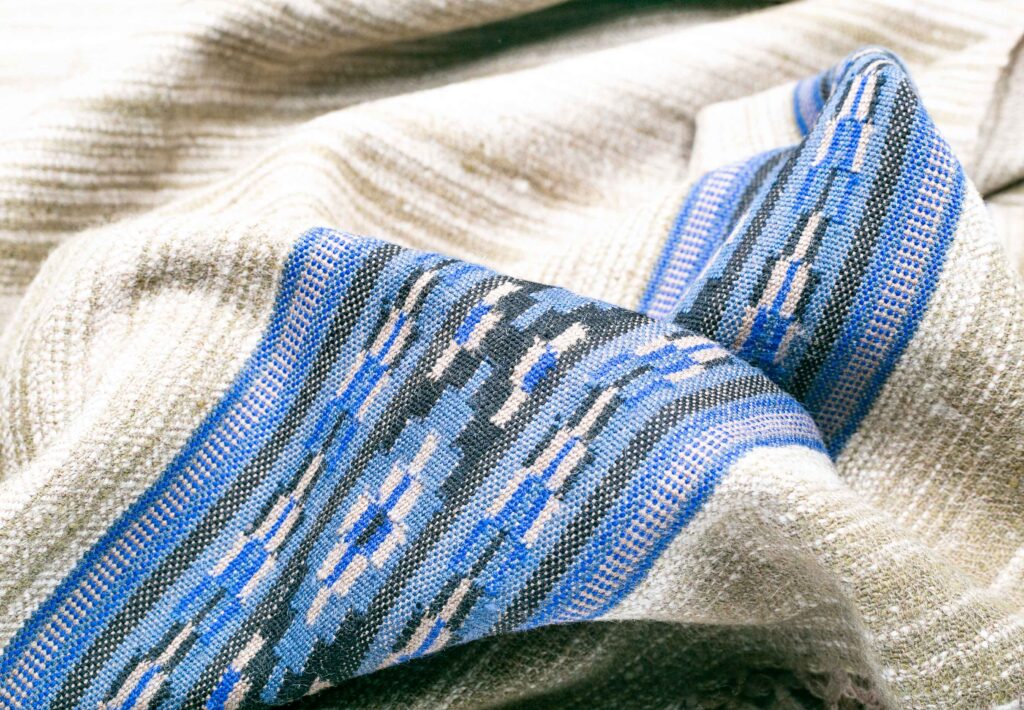
Kashmir’s Pashmina shawls stand as the finest among various shawl types. Pashmina derives its name from Persian ‘Pashm’ meaning wool – these shawls and scarves were hugely valued by Mughal emperors. However, counterfeit materials combined with mass production methods now pose a threat to both authenticity and quality of Pashmina products. In order to preserve this traditional craftsmanship as well as support the craftsmen involved, GI tagging has been introduced.
To safeguard and honor this distinction, Kashmiri Pashmina received the Geographical Indication (GI) mark as a symbol of authenticity. The GI label certifies that the product possesses distinct qualities found only in that specific geographic region. Thus, a Pashmina shawl with a GI mark signifies its origin in Kashmir and its possession of unique traits. These are the attributes of a shawl marked with GI. This tag also secures artisans’ rights and assures buyers of the genuine Pashmina.

Kashmir’s Pashmina, also known as cashmere has earned G.I certification or G.I Tag due to the unique traditional process used by local artisans in the Kashmir valley. This certification has greatly reduced doubts about authenticity raised by other sources. Genuine Pashmina is identified by artisans at the Craft Development Department in Srinagar, Kashmir. They attach a special rubber stamp with a unique ID on it. Each shawl has a different ID, and the tags are tough to remove; they get damaged if someone tries to take them off.
What GI certification is and its importance
A G.I (Geographical Indication) is a label that shows where a product comes from and legally connects it to that place. The World Trade Organisation (WTO) is in charge of giving out these labels. They make sure they go to the right places and settle any disagreements. Sometimes, two areas might share the same G.I trademark, even if they’re in different countries. G.I labels stop others from copying the products and making fake ones.
G.I (Geographical Indication) tag serves as an intellectual property right, safeguarding the product’s origin and assuring consumers of authenticity and top-notch quality.
GI supports the livelihood of local artisans who exclusively create authentic Pashmina shawls through traditional and intricate techniques. The GI mark authenticates genuine Kashmiri Pashmina, protecting buyers from counterfeit sellers. Pashmina has regained its reputation, causing fake shawl vendors to either lower prices or be transparent about their machine-made products. It makes sure that the special things about a product from a specific area stay safe and aren’t copied.

Importance of GI Certification for Pashmina Shawls
GI certification marks the authenticity and quality of the Pashmina shawls. If a product features the GI Pashmina certification mark, like a special logo, it indicates that a special group has verified the product as genuine.
You can often spot GI certification mark on the tag or package of the item. Further, you can also examine a Pashmina item, assess its quality, softness, and design intricacy. The price can also be a clue about its authenticity. Real Pashmina items are pricey due to their elegance. If something seems too cheap, it might not be real Pashmina.
The GI Pashmina certification is super important for keeping the old ways of making Pashmina shawls in Kashmir alive. It makes sure the shawls are made using the same special methods that have been passed down for generations. This helps keep the special things about Pashmina from Kashmir safe and protected.
The GI Pashmina certification also keeps you safe as a buyer. It guarantees that the Pashmina shawls are real and made in Kashmir, India, using traditional methods.

Benefits of Choosing GI Certified Pashmina Shawls
Artisans from the Kashmir valley become part of a group called ‘Tahafuz’ to register themselves. Each registered artisan takes their shawls to the Pashmina Testing & Quality Certification Centre (PTQCC) at the Craft Development Institute (CDI). This center is supported by the Indian government. The shawls are tested there to make sure they’re good quality, and then they get a special G.I tag. This tag has a code that matches the artisan’s information.
The GI Pashmina certification helps the people who make Pashmina shawls by giving them more chances to earn money and showing off their amazing skills. It makes sure their special ways of making shawls are known and safe, and that they get paid fairly. This helps make their lives better and also helps their communities grow stronger.
By buying these shawls, you’re also showcasing that how much hard work goes into their making. And your purchase can tell others about the beautiful culture of Kashmir. You’re also supporting equality and helping people who need it.
Features of GI Certified Pashmina Shawls
For a special mark called G.I to be put on Kashmiri pashmina or cashmere, these things have to happen: The shawl should be made only from pure Pashm wool fibre taken from the ‘Capra Hiracus’ goat. The fibers used to make it must be very thin, not bigger than 16 Microns. The shawl must be hand woven by local craftsmen from Kashmir. And only hand spinning the yarn is allowed, not by machines.
GI Pashmina items possess distinct visual and touch features that set them apart. Pashmina products are famous for their delicate and lightweight feel, their softness, and their ability to provide warmth. They are generally crafted using either a twill weave or a plain weave, and they often come embellished with detailed embroidery or designs. When inspecting a Pashmina item, pay attention to the excellence of the hand weave, the fabric’s thickness and softness, and the intricate nature of the embroidery or designs.

Checking for the GI Mark
When you’re buying a Pashmina shawl, there are a few things to remember. First, buy it from a trusted seller who’s been in this business for a while and has lots of happy customers. Second, make sure the shawl has a GI certification stamp on it. This means it’s a 100% pure Pashmina shawl. Third, if not the first two, the seller should at least show you a certificate that proves it’s a real GI Pashmina shawl. These certificates are given by the Craft Development Institute (CDI) in Srinagar. They test the shawls and give certificates for the real ones.
Verification Methods
To check if a Pashmina shawl is real, you can look up the code on the G.I tag on the Pashmina Authentication Website. Enter this code into the verification box carefully and view the details related to that particular item.
Pashmina and its historical significance
Pashmina is a type of wool obtained from the underbelly of the Himalayan Capra hircus goats, highly sought-after in the fashion world due to its feather-light texture, softness and warmth. It has been produced in Kashmir India, Nepal and Tibet for centuries; records from the Indus Valley Civilization date as far back as 3300 BCE.
The process involves combing the undercoat with a metal brush and then hand-sorting fibers according to their fineness and softness. These fine fibers are spun into yarn by spindles or wheels before being handwoven into shawls or scarves – a time consuming affair requiring skilled artisans.
In the present era, Kashmiri Pashmina faces competition from various Himalayan regions. While Kashmir has the smallest share of pure Cashmere wool production, China dominates the Pashmina market, generating around 70% of global Cashmere. Mongolia follows, contributing significantly. Despite producing less than 1% of the world’s Cashmere, Kashmir produces the highest-quality Cashmere. Himalayan areas like Ladakh, China, Nepal, and Afghanistan are home to different Cashmere goat varieties. Examples include Changthangi goats from Ladakh, Malra goats from Kargil, Chegu goats from Himachal Pradesh and Uttarakhand, and Chyangra goats from Nepal.
Conclusion:
GI Pashmina is like a special stamp that guarantees Pashmina products are made in a certain way, using old methods and materials from a place in India called Kashmir. This stamp is really important because it helps keep the special way of making Pashmina alive, helps the people who make it, and makes sure you don’t buy fake stuff. To help and keep GI Pashmina safe, people like you can buy things with the stamp and tell others why it’s important.
Big groups like governments can also help by giving money to learn more and make things better, and by making rules that keep the people who make Pashmina safe.
The future for GI Pashmina looks good. More and more people are learning why it’s good to keep old ways of making things and help the Earth.
This stamp can also help people who live in small places and don’t have much money. It can also keep the special culture of Kashmir alive. If we keep helping and talking about GI Pashmina, it can keep growing and make the world better.